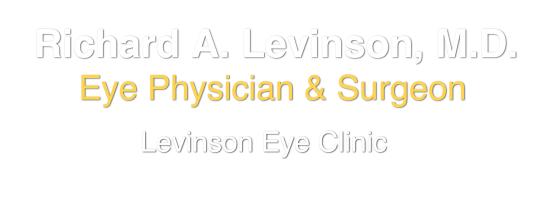
What to Expect After Surgery
After Surgery Facts
Click title to read details…
How soon can I return to my daily activities?
For the first 12 hours immediately following your procedure, we strongly encourage you to rest and keep your eyes closed as much as possible. Both PRK and LASIK patients will wear a clear, protective eye shield until the next morning following surgery, and will then just wear the shield at night to protect the eye while sleeping for 7 days. PRK patients will, also, wear a clear extended-wear soft contact lens for 3 to 5 days. Most LASIK patients can see to work and drive 24 hours after the procedure. PRK recovery is slower. PRK patients are very blurry for 3 days after the procedure. Most PRK patients can return to work and drive 4-5 days after PRK. Of course, you wouldn’t resume activities such as driving until your vision is adequate and you feel safe to drive. You should avoid rubbing or touching your eye for 1 week and then do so with caution through the first month. Avoid getting soap, shampoo, hair spray, etc. in your eyes for 1 week. Avoid sunlight exposure, scuba diving, swimming, saunas, hot tubs, and water sports for a minimum of 1-2 weeks. Wear proper eye protection when participating in active sports and working with machinery, tools, or hazardous materials. These are only guidelines; the healing response varies from person to person – we may suggest longer waiting periods for certain activities.
How long does it take to adjust to my “new vision” after Laser Vision Correction?
LASIK provides extremely rapid visual improvement; over 95% of patients can see to pass a driver’s test 24 hours after LASIK. PRK patients typically are seeing clearly to function 10-14 days after PRK. However, there is an adjustment period required to adapt to the “new vision”. When a patient gets a new pair of glasses, it can take days to weeks to adjust to the new correction. Laser Vision Correction essentially gives the patient “new eyes”, and there is a similar adjustment period. It typically takes two to four weeks for patients to adapt “psychologically” to their new visual status.
Will I have dry eyes after Laser Vision Correction?
YES! Every LASIK and PRK patient has dry eyes initially following their procedure. LASIK patients will experience the dryness immediately. PRK patients typically have watering for the first few days after their procedure but the dryness then presents 4-5 days after the procedure. For both procedures, the eyes typically are not so dry in the morning but the dryness may become more significant as the day progresses. Prolonged computer usage makes the dry-eye symptoms worse. When we use the computer, or perform any near visual task, such as reading, we are hard-wired to decrease our rate of blinking. This leads to tear evaporation and increased dry eye symptoms. Frequent use of lubricating eye drops usually helps but if this is not adequate, punctal plugsare a simple, effective treatment option. The dry symptoms usually diminish within 2-3 months following either procedure but dry eye symptoms may persist indefinitely in some patients. This group of patients often had dry eyes prior to Laser Vision Correction and were unable to comfortably wear contact lenses due to dry eye symptoms. Patients may occasionally experience dry eye symptoms when they first open their eyes in the morning after sleeping and this may continue for many months following the procedure.
Will I need to wear an eye patch after the procedure?
You will have to wear clear plastic eye shields for 24 hours after the procedures so that you don’t inadvertently rub your eyes. You will also sleep with the shield for 7 days after the procedure. However, you will not need to wear the shields during the day.
Will there be any limitations on my daily activies after the procedure?
There are minimal limitations on your normal activities. We ask patients not to wear eye make-up for one week. If you participate in physical activities such as karate or basketball, where there is a chance of being “poked in the eye”, you should wait at least 2-4 weeks and then wear eye protection.
If I don’t get a perfect 20/20 result, can I have a repeat procedure to improve the vision?
If you have an undercorrection of overcorrection a repeat procedure can be performed to improve your vision. There is a limit to the precision of the Laser, however. If your vision is 20/30 or worse after the initial Laser procedure, I can usually retreat; but if your vision is 20/25 after the initial Laser procedure, I may not be able to retreat. I am limited in my ability to retreat by the physical properties of the Excimer Laser. If you are 20/25, I would have to remove less than 2 microns of tissue (approximately 1/25 of a human hair or 250 molecules.) The Excimer Laser cannot remove this little amount of tissue precisely. You must wait for the vision to stabilize before being retreated. This takes, at minimum,3 months for LASIK and 6 months for PRK. You may require a mild glasses prescription during this waiting period to see distance. We will provide you with lenses for your glasses at no charge.
What holds the flap in place after LASIK and does the flap ever come loose?
The LASIK flap is remarkably secure. Unless an eye had experienced significant trauma, I am not aware of a flap becoming dislodged after LASIK. The flap is primarily held in position by it’s inherent shape, like a piece of a puzzle. The flap is also held in place by the normal physiologic activity of the cornea, by mucopolysaccharides (a gluey substance secreted by the corneal cells), and by the overlying corneal epithelial cells (the clear, skin-like layer that covers the cornea).
Will my eyes look different after Laser Vision Correction?
After LASIK, your eye will look the same as it did before LASIK. No one (other than your Eye Surgeon) can tell by looking at your eye that you have had LASIK. Your eye color will not change with LASIK.
What will my vision be like in the days to weeks after Laser Vision Correction?
95% of patients can see 20/40 or better the day after LASIK, which is good enough vision to pass a drivers test in Colorado. However, most patients are aware of a haziness to their vision, often with shadowing, halos or ghost images, that usually resolves within a few weeks. Occasionally, these visual symptoms may persist until the eye is retreated, if necessary, at three months or rarely may even be permanent. 95% of patients can return to normal activity within a few days, but may have some difficulty with reading or night driving. If you are over 40 and have monovision, you may have more initial difficulty adapting to your “new vision”, both for reading and driving. However, 99% of my patients do adapt to monovision. 95% of my patients are not wearing glasses at one year after LASIK. However, in the first few weeks after LASIK, you may be frustrated and have some difficulty reading or driving at night. If you do have difficulty seeing to function in the immediate weeks following your LASIK, I will provide you lenses for your frames(at no charge) that usually allow you to function until your vision stabilizes or until you are retreated, if necessary, at 3 months.
How long does it take for the flap to heal after LASIK? Does the flap scar?
The LASIK flap adheres within days to the underlying corneal bed. I have seen flap movement within the first 3-4 days after LASIK in 1-2% of patients. If the flap malposition is immediately recognized and treated, the flaps are very easy to reposition in this early post-op period. I have not seen a flap displaced after 4 days post-op. I would assume that a LASIK flap could be dislocated by significant direct trauma to the eye for many weeks after LASIK. I had one patient who was hit directly in the eye three months after LASIK by a tennis ball. She was playing “up at the net” and was struck directly in the eye by a very hard hit tennis ball. The trauma caused a large corneal abrasion, but did not affect the LASIK flap. A corneal abrasion is the same injury I would expect in a non-LASIK eye so, essentially, her LASIK eye was able to withstand significant, direct trauma without affecting the LASIK flap. Her eye healed without complication. The LASIK flap rarely shows any evidence of scar formation. Unless the eye experiences a very rare complication (ex. infection or inflammation), the LASIK flap will not scar.
The Facts
Will Open your Eyes

LASIK provides extremely rapid visual improvement; over 95% of patients can see to pass a driver’s test 24 hours after LASIK.

PRK patients typically are seeing clearly to function 10-14 days after PRK.
The Fine Art of Vision Care

